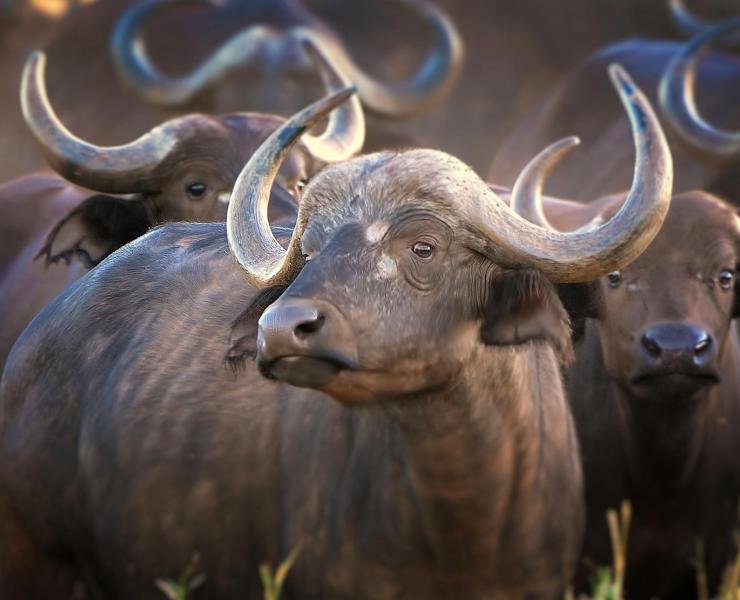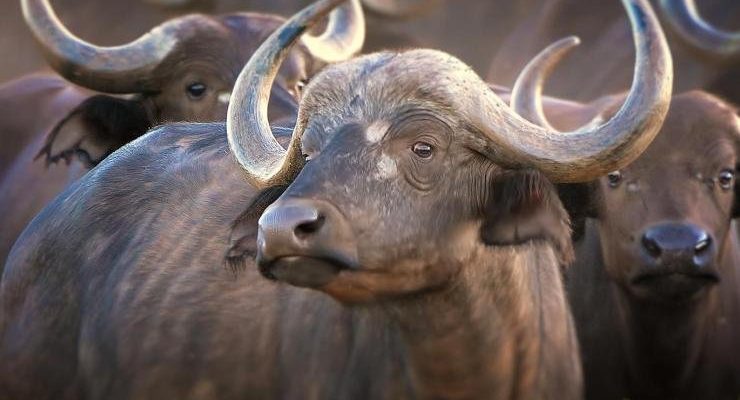
Now, there are different types of buffalo—like the American bison and the water buffalo. They each face their own set of challenges, threats, and conservation efforts. Let’s dive into the world of buffalo to understand their status and what we can do to help keep them thriving in the wild.
Understanding Buffalo Species
Buffalo belong to the Bovidae family and are often seen as symbols of strength and endurance. There are two primary types: the American bison and the water buffalo.
– American Bison: Once roamed the North American plains in herds numbering in the millions, but hunting and habitat loss led to their near-extinction in the late 1800s. Today, they are slowly recovering due to conservation efforts, but they still face threats from habitat fragmentation and climate change.
– Water Buffalo: Found primarily in Asia, they are domesticated in many areas for their milk and work. While their domesticated populations are stable, their wild counterparts, like the Asian wild buffalo, are endangered due to habitat destruction and poaching.
Both species are critical to their ecosystems, with the bison helping maintain grasslands and the water buffalo supporting wetland ecosystems.
Current Status of Buffalo Populations
Here’s the thing: the status of buffalo populations varies widely depending on the species and region.
– The American bison was listed as near threatened, but thanks to concerted conservation efforts, its numbers have rebounded from around 300 individuals in the 1800s to an estimated 500,000 today. However, most of these bison are in protected areas or farms, and true wild populations remain limited.
– On the other hand, the Asian wild buffalo is facing a much grimmer situation. It’s classified as endangered, with fewer than 4,000 remaining in the wild, primarily due to poaching and loss of habitat.
Understanding these different statuses is crucial for effective conservation efforts. It helps highlight where we need to focus our attention and resources.
Threats Facing Buffalo Populations
Buffalo face a variety of threats that contribute to their declining numbers. Recognizing these threats is key to finding solutions.
- Habitat Loss: As human populations expand, buffalo habitats are reduced for agriculture, urban development, and infrastructure projects. This not only shrinks their living space but also disrupts their natural behaviors.
- Poaching: Both American bison and water buffalo suffer from hunting pressure. In some areas, poaching for meat and trophy hunting poses significant risks to remaining wild populations.
- Climate Change: Changing weather patterns affect the ecosystems that buffalo depend on. Droughts can reduce grass availability for bison, while rising sea levels threaten the wetlands inhabited by water buffalo.
Understanding these threats helps us see why conservation efforts are so crucial. If we want to keep buffalo around for future generations, we need to tackle these issues head-on.
Conservation Efforts: What’s Being Done?
Many organizations and governments are taking steps to protect buffalo populations. Here are some of the most notable efforts:
– Protected Areas: National parks and reserves in the U.S. and elsewhere provide safe havens for bison. The Yellowstone National Park, for instance, is home to one of the largest wild herds of bison in North America.
– Breeding Programs: Organizations are working to breed bison in captivity and reintroduce them into the wild. The conservation strategy focuses on maintaining genetic diversity and ensuring healthy populations.
– Legislation: Laws like the Endangered Species Act offer protections for threatened species, including some buffalo. These legal frameworks help to restrict hunting and preserve habitats.
These efforts are essential, but they need support from everyone. Public awareness and involvement can make a significant difference in conservation success.
The Role of Local Communities in Conservation
Local communities play a vital role in buffalo conservation. Here’s how:
– Education and Awareness: Teaching locals about the importance of buffalo to their ecosystems can foster a sense of connection and responsibility. When people understand that these animals are a part of their heritage, they are more likely to support conservation efforts.
– Sustainable Practices: By promoting sustainable farming and land-use practices, communities can help protect buffalo habitats. This means finding a balance between agricultural needs and the preservation of natural areas.
– Community-Based Initiatives: Some regions empower local communities to manage buffalo populations. Involving them in decision-making processes ensures that conservation efforts align with their needs and cultural values.
When communities feel invested in conservation, the chances of success increase dramatically.
How You Can Help Buffalo Conservation
You might be wondering, “What can I do to help?” Fortunately, there are several simple ways to get involved:
– Support Conservation Organizations: Consider donating to or volunteering with organizations focused on buffalo conservation. Groups like the National Bison Association or WWF work tirelessly to protect these majestic animals.
– Raise Awareness: Share information with friends and family about buffalo and their conservation status. The more people know, the more they can advocate for these animals.
– Be Mindful of Your Choices: Support sustainable and ethical products. When you purchase goods relating to buffalo, like meat or crafts, ensure those come from responsible sources.
Your actions can help create a ripple effect, encouraging others to join the cause.
Buffalo are more than just animals; they are a symbol of resilience and a critical part of our global ecosystems. While both American bison and water buffalo face challenges, the efforts to conserve them are gaining ground.
It’s important to understand that each small action contributes to a larger impact. By raising awareness, supporting local communities, and aiding conservation organizations, we can help ensure these magnificent creatures continue to roam our planet.
Remember, the future of buffalo is in all of our hands. Let’s work together to protect these remarkable animals and the landscapes they call home.

